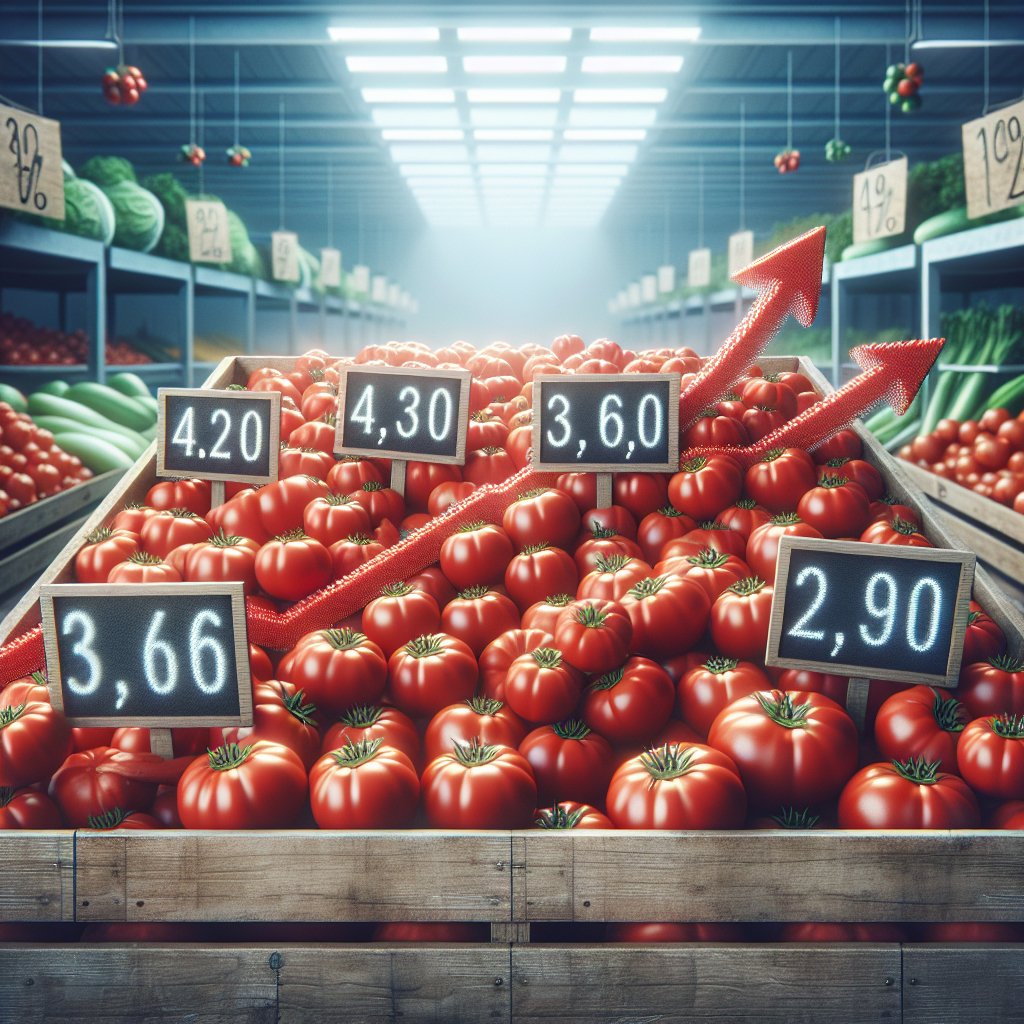The vegetable market is a dynamic and complex system influenced by various factors, and one of the most notable trends in recent years has been the rising prices of tomatoes. This increase can be attributed to a combination of environmental, economic, and social factors that affect both supply and demand. Understanding these elements is crucial for consumers, farmers, and policymakers alike, as they navigate the challenges and opportunities presented by the ever-evolving agricultural landscape.
Factors Influencing Tomato Prices
Several key factors contribute to the fluctuations in tomato prices. These include climate change, production costs, market demand, and global trade dynamics. Each of these elements plays a significant role in shaping the price of tomatoes, making it essential to analyze them in detail.
Climate Change and Environmental Impact
Climate change has emerged as a critical factor affecting agricultural production worldwide. For tomatoes, which are sensitive to temperature and moisture levels, changes in climate can lead to significant yield variations. Extreme weather events, such as droughts, floods, and unseasonable temperatures, can disrupt the growing season and reduce overall production.
- Drought Conditions: Prolonged periods of drought can severely impact tomato crops, leading to lower yields and higher prices. Farmers may struggle to irrigate their fields, resulting in reduced fruit size and quality.
- Flooding: Conversely, excessive rainfall can lead to flooding, which can damage crops and delay harvests. This unpredictability in weather patterns makes it challenging for farmers to plan their production cycles effectively.
- Pest and Disease Pressure: Changing climates can also alter the prevalence of pests and diseases that affect tomato plants. Increased infestations can lead to higher production costs as farmers invest in pest control measures.
Production Costs
The cost of producing tomatoes has risen significantly in recent years, contributing to higher prices for consumers. Several factors contribute to these increased production costs:
- Labor Costs: The agricultural sector has faced labor shortages, leading to increased wages for farmworkers. This rise in labor costs is often passed on to consumers in the form of higher prices.
- Input Costs: The prices of fertilizers, pesticides, and other essential inputs have also increased. Farmers must invest more to maintain their production levels, which can lead to higher retail prices.
- Transportation Costs: Rising fuel prices impact the cost of transporting tomatoes from farms to markets. As transportation costs increase, so do the prices consumers pay for fresh produce.
Market Demand and Consumer Behavior
Market demand plays a crucial role in determining tomato prices. As consumer preferences evolve, the demand for certain types of tomatoes can fluctuate, impacting their market value.
Shifts in Consumer Preferences
In recent years, there has been a growing trend towards organic and locally sourced produce. Consumers are increasingly willing to pay a premium for tomatoes that are grown sustainably and without synthetic pesticides. This shift in preference can drive up prices for organic tomatoes, as the supply may not be able to keep pace with demand.
- Health Consciousness: As people become more health-conscious, the demand for fresh vegetables, including tomatoes, has surged. This increased demand can lead to higher prices, especially during off-peak seasons.
- Seasonality: Tomatoes are a seasonal crop, and prices can vary significantly depending on the time of year. During the off-season, when supply is limited, prices tend to rise sharply.
Global Trade Dynamics
The global market for tomatoes is interconnected, and international trade policies can significantly impact prices. Tariffs, trade agreements, and import/export regulations can all influence the availability and cost of tomatoes in various markets.
- Import Tariffs: Countries that impose tariffs on imported tomatoes can create artificial price increases in their domestic markets. This can lead to higher prices for consumers, even if the global supply remains stable.
- Export Demand: Countries that produce surplus tomatoes may seek to export their products to international markets. Increased demand from abroad can drive up prices domestically, as producers prioritize exports over local sales.
Conclusion
The rising prices of tomatoes are a multifaceted issue influenced by environmental, economic, and social factors. Climate change poses significant challenges to production, while increasing costs and shifting consumer preferences further complicate the market landscape. Understanding these dynamics is essential for all stakeholders in the agricultural sector, from farmers to consumers, as they navigate the complexities of the vegetable market. As we move forward, it will be crucial to develop sustainable practices and policies that can help stabilize tomato prices and ensure food security for future generations.




